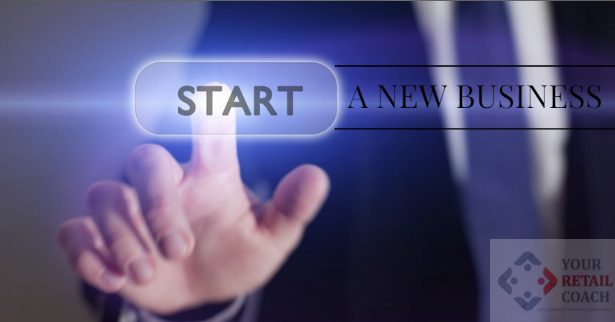Getting a new business to take off can be a very challenging task. At the heart of every business lies an idea or a concept of a product or a service which is meant to fulfill certain specific needs for certain specific users and under certain specific conditions while generating profits for business.
In order to convert that idea into reality, a business plan or a blueprint is required. This blueprint is nothing but elaborate planning for all the business functions like marketing, finance, HR, operations, supply chain and logistics, IT systems etc. These functions work coherently and cohesively to create the intended product or service and make it accessible to its potential users. A generic business blueprint comprising of some of the key functions is discussed here.
1. External environmental scan
Before functional planning is made, it is important to conduct an external environment scan to check the conduciveness of the environment in which a business will operate. Various elements of the business environment are demographics, socio-economic conditions, technology, laws and regulations, competition, socio-cultural fabric, proximity to the sources of raw materials, infrastructure and transportation connectivity, availability and mobility of workforce and so on. The relevant elements must be in favour of the conduct of business.
2. Marketing Strategy – From product to customer via market
Technically, the conceptualization of a business or product idea falls in the realm of marketing. Marketing strategy involves addressing several critical questions pertaining to the product, pricing, promotion, distribution, processes, customers, market segment, competition and positioning. Gathering data and information for devising a market strategy involve extensive market research and business intelligence.
1. What will be the core product or service? What needs or purpose it will fulfill?
2. Who are the potential customers and where are they located? (customer demographics)
3. What is the market size and targeted market share?
4. What is the brand / product USP and what will be the positioning strategy?
5. What are the different marketing processes involved?
6. What is the existing and expected level of competition?
7. What will be the pricing strategy?
8. What will be the channels of distribution?
9. What kind of promotional campaigns will be launched?
3. Finance Strategy – Managing the finance
Finance is another critical area for any new business. One of the biggest hurdles in the process of starting a new business is acquiring capital funding. Finding interested investors, to a large extent, depends on the attractiveness of the marketing strategy of a business. However, there could be other factors as well like general economic and market conditions, prevailing interest rates, sectoral performance, other investment opportunities etc.
In the backdrop of trying to sell ambitious business plans in order to attract investments, there is a necessity to back it up with a strong financial planning which extends to maintaining a sound financial health of business to remain afloat. Some of the most important considerations in building a sound finance strategy are mentioned here.
1. Determining the amount of capital requirement (over business life cycle) and capital structure
2. Identifying funding sources with optimized cost of capital and repayment terms
3. Pragmatic estimation of return on investment and calculation of repayment period
4. Expected time period for achieving break-even
5. Planning for working capital management
6. Cost analysis
7. Preparation of financial statements
4. Technology and information systems – Getting the right technologies
Use of technology and information systems can significantly enhance the functional performance of a business. But what is equally important is the adoption of the right technological tools and applications. In order to devise an effective IT strategy, entrepreneurs need to answer some pertinent questions related to the IT systems in their proposed new business.
IT and ITeS enabled automation and services have become an inseparable part of everyday business operations. For example, use of POS machines, barcode scanners, printers, monitors and CCTVs are very common in modern day retail and departmental stores. The increased usage of e-commerce, smartphones and the internet has pushed companies to launch mobile apps, create online channels of distribution and make their selling platforms compatible with popular payment solutions like net banking, debit and credit cards, mobile wallets, unified payment solutions, QR code technology etc.
IT systems are equally important for enhancing and facilitating internal operations. Business functions and processes are often inter-related and interdependent for day to day and strategic decision-making. This gives rise to the need for integrated data and information management tools and technologies like ERP, data analytics, IT networking, internet and cloud-based services.
There is no dearth of IT and automation tools. The question is the selection of the right technologies which will facilitate in executing business processes, operations, activities and help in business decision-making. Secondly, selection of IT tools and technology involve consideration of factors like cost of acquisition and maintenance, depreciation, replacement and upgradations.
5. HR Strategy – Having the right people on board
A good business plan is incomplete without a well-defined organization structure and organization design, a strong organization culture and the right people working on it. Every individual plays a certain role in an organization and his authority, responsibilities and accountabilities must be clearly spelt out. An entrepreneur must also ascertain the quantitative and qualitative aspects of the manpower requirements of business. In order to attract and retain productive employees, it is important to have a fair and competitive structure of compensation and benefits. Other important considerations in building an HR strategy are –
- Training and development programs to fine tune knowledge and skills
- Performance management system
- HR processes and audit
- HR manual comprising of rules and regulations like leave and attendance policies, exit formalities, dress code, discipline and decorum etc.
6. Compliance – Adherence to statutory norms
In order to start and run a business, entrepreneurs need to take several licenses and permissions from the concerned authorities. The regulatory framework also lays down the terms and conditions under which business operations can be carried out. An entrepreneur and his employees need to be conversant with these rules and regulations.
7. Supply Chain Strategy – Managing the logistics
A business enterprise needs to make sure that the products and services reach the customers and retail points in the shape and form as intended and in required quantities. Inputs to a product pass through various value addition points to become the final product which again passes several hands to reach to end customers. Ensuring a smooth supply chain process from manufacturing to the store involves management of distributors and suppliers network, channels of transportation, storage and warehousing and information systems.
Starting a new business and getting it to run smoothly can be a humongous and challenging task. But the quality of efforts exerted at the initial stages of business planning can significantly reduce the level of complexities involved. Having the right functional strategies can help an entrepreneur keep the coast clear and smoothly roll out a new business project.
To know more about “Business Start-Up” get in touch with our Retail Experts on [email protected]
YRC Related Articles: How to Write SOPs for Marketing?, 6 Ways To Grow Your Business, How to Start a Retail Business in India, Business Expansion Plan for Small Entrepreneurs, Six Steps to Writing a Great SOP for Retail, How to write SOPs for an Apparel Brand?, How to Develop SOPs for Quick Service Restaurant?, How to write SOPs for Furniture Showroom
Author Bio

Rupal Agarwal
Chief Strategy Officer










